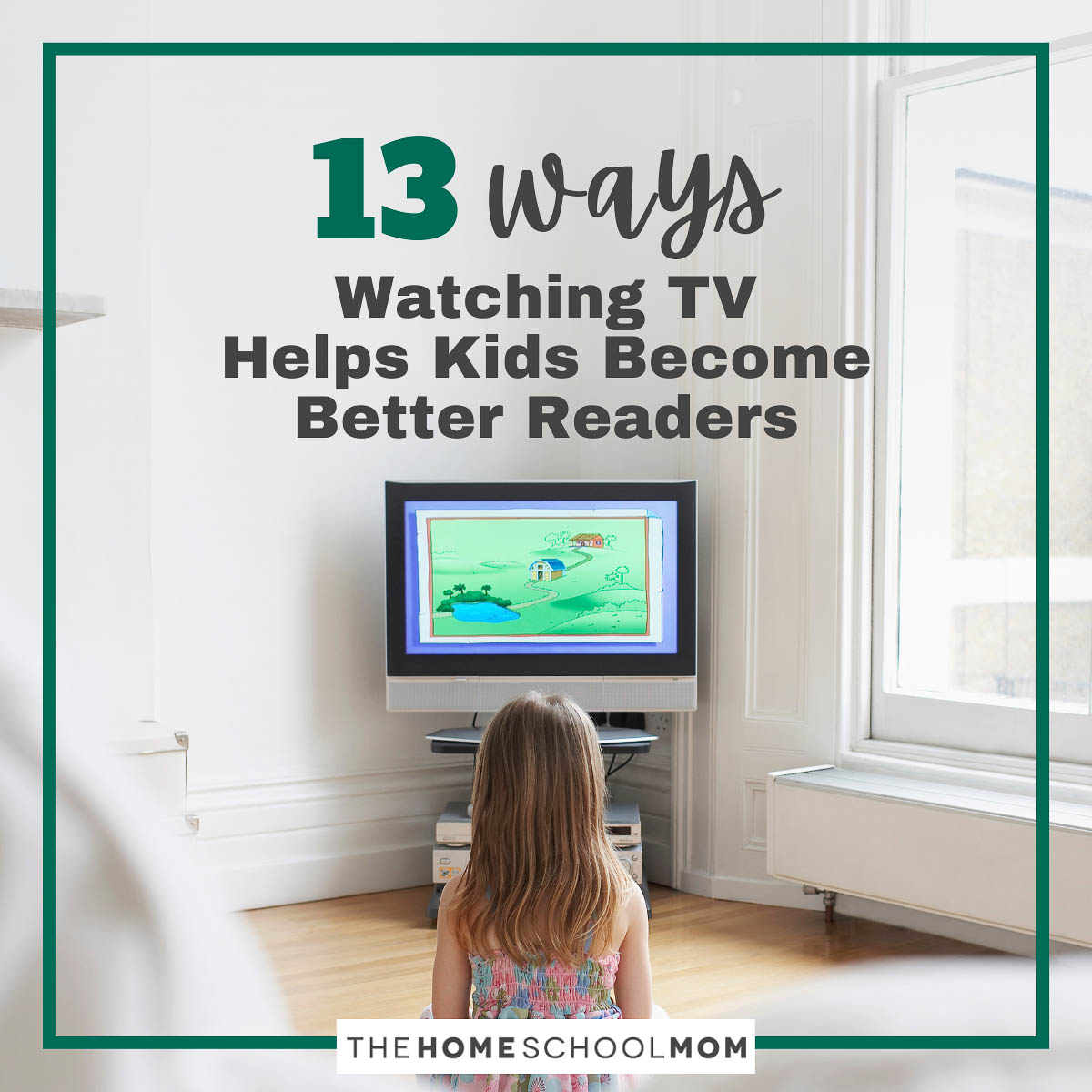Do you feel like your kids watch too much TV?
If so, you’re not alone. Many parents worry that their kids are getting too much screen time. It’s not an unfounded fear. Too much of a good thing isn’t always a good thing.
Too much screen time can cause eye strain, chronic neck and back problems, anxiety, depression, trouble sleeping, and even obesity.
You’re right to be concerned. However, in moderation, technology can be a powerful learning tool.
Do you have a reluctant reader? If so, here’s how TV can help aid in the learning-to-read process.
Even if your kids are bookworms, there are benefits to watching TV shows and movies together if it’s something your family enjoys.
Here are 13 ways watching TV helps kids become better readers.

13 Ways Watching TV Helps Kids Become Better Readers
- Captions allow kids to read along while actors converse on-screen.
- Watching TV provides exposure to many different accents and regional dialects.
- Kids can see clear examples of good writing vs. bad writing.
- Reading a book together and then watching the movie offers a unique opportunity to compare and contrast the storyline, characters, and setting — plus, it’s fun!
- TV series and movies offer the opportunity to see story structure come to life: the hook that catches your attention, the build up, the climax, and how everything ties together in the end.
- Active viewing — taking time to pause and talk about what’s happening in the story — helps kids develop a deeper understanding of the larger picture.
- Watching a movie or series BEFORE reading the book can pique interest and build excitement for reluctant readers.
- Docuseries and documentaries can introduce kids to age-appropriate academic language in an engaging way.
- TV shows and movies allow kids to see the different elements of a story clearly pictured on-screen: plot, characters, setting.
- Watching TV with our kids opens the door to all sorts of conversations; and communication is a skill to be learned — both verbally and written.
- Seeing characters interact on-screen offers kids the chance to observe the various layers of communication: body language, facial expressions, tone of voice, inflection.
- Co-watching (or watching together) educational content with younger kids means they’re more likely to interact with the show and helps them retain more of the information they’re viewing on-screen.
- Like books, movies can spark creativity and encourage imaginative play in kids of all ages.
As you can see, there’s more than meets the eye when it comes to kids watching TV and movies. There’s a lot happening in their brains that we can’t always see. If we can keep these things in mind, we can use TV time as an educational tool and stop the battles over screen time.
Try some of the ideas listed above and you’ll see the learning benefits of adding TV to your homeschool lesson plan.
What are your family’s favorite shows and movies? Share in the comments below!




 Amy is a freelance writer and blogger who homeschools her troupe of tiny humans while pursuing her lifelong dream of becoming a published author. She is fueled by coffee and the desire to do ALL. THE. THINGS. She has the attention span of a squirrel, though somehow manages to make it through each day with everyone fed and happy (well, mostly happy! Ha!) while striving to make every tomorrow better than the last.
Amy is a freelance writer and blogger who homeschools her troupe of tiny humans while pursuing her lifelong dream of becoming a published author. She is fueled by coffee and the desire to do ALL. THE. THINGS. She has the attention span of a squirrel, though somehow manages to make it through each day with everyone fed and happy (well, mostly happy! Ha!) while striving to make every tomorrow better than the last.
Leave a Reply